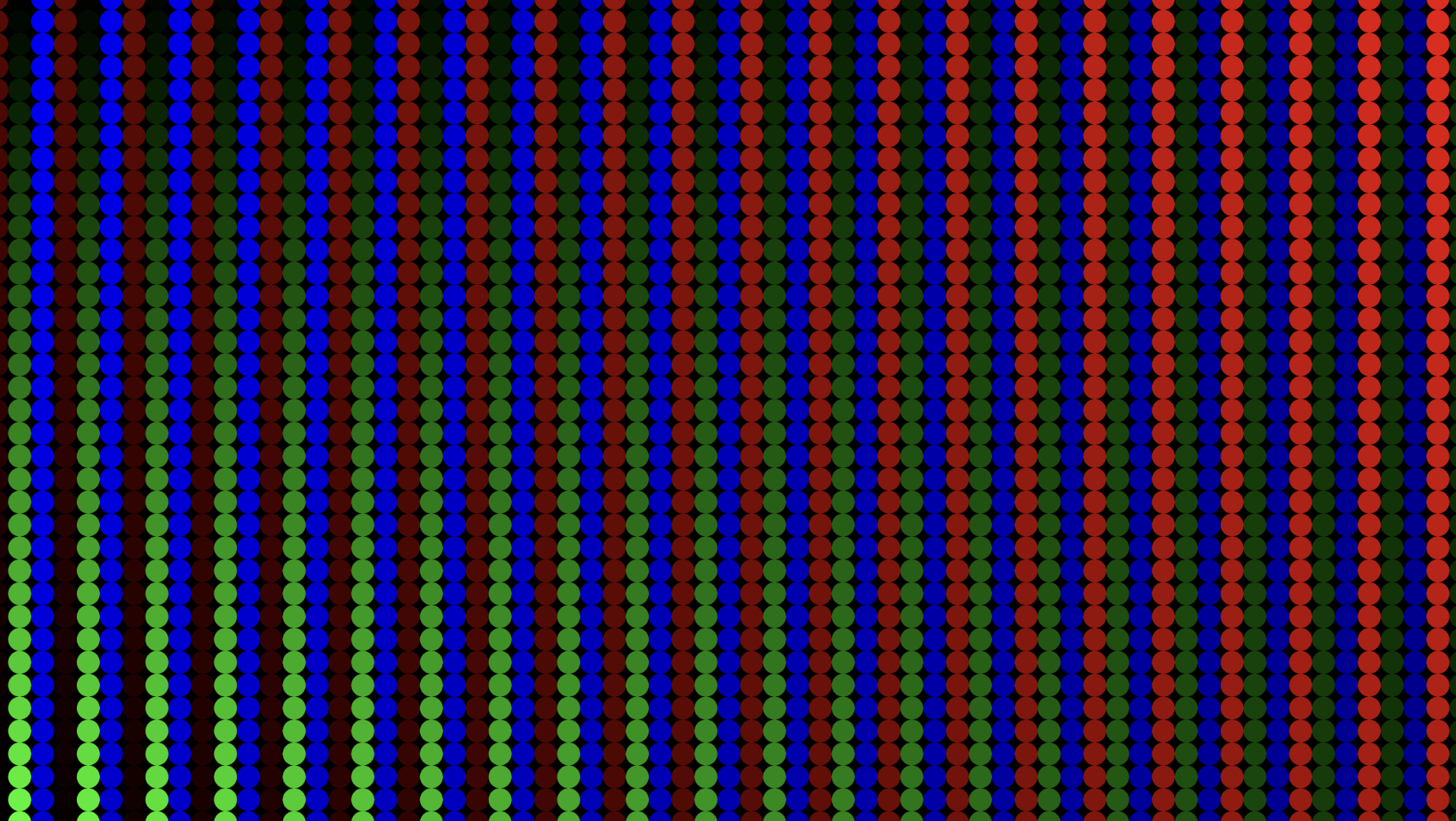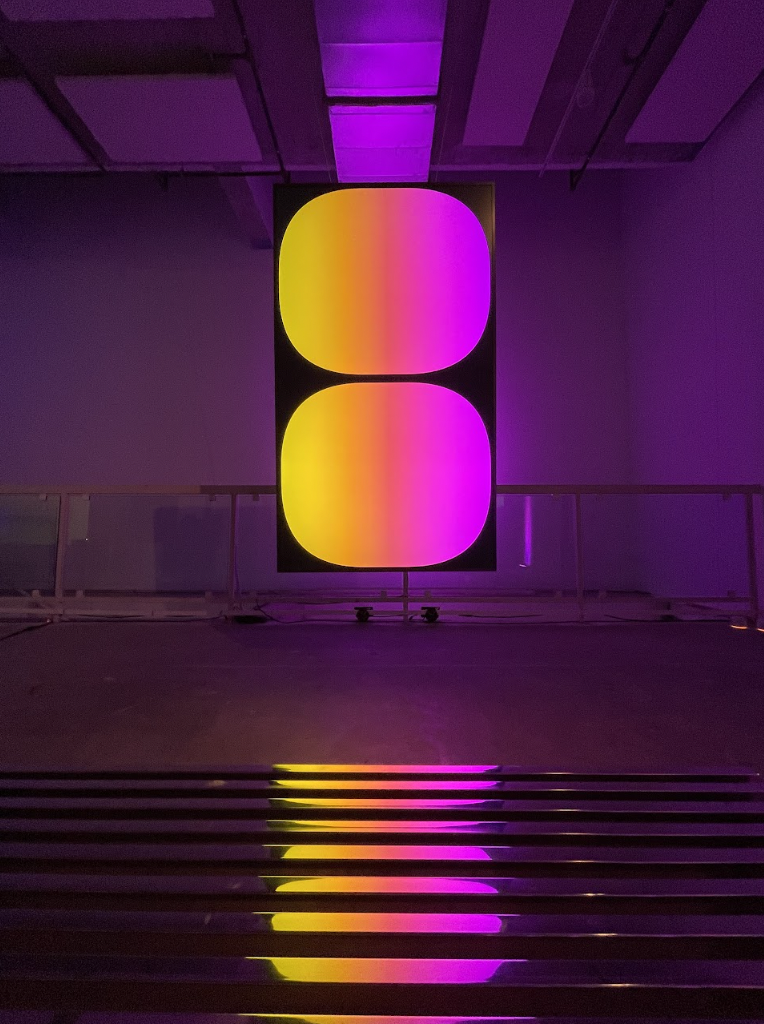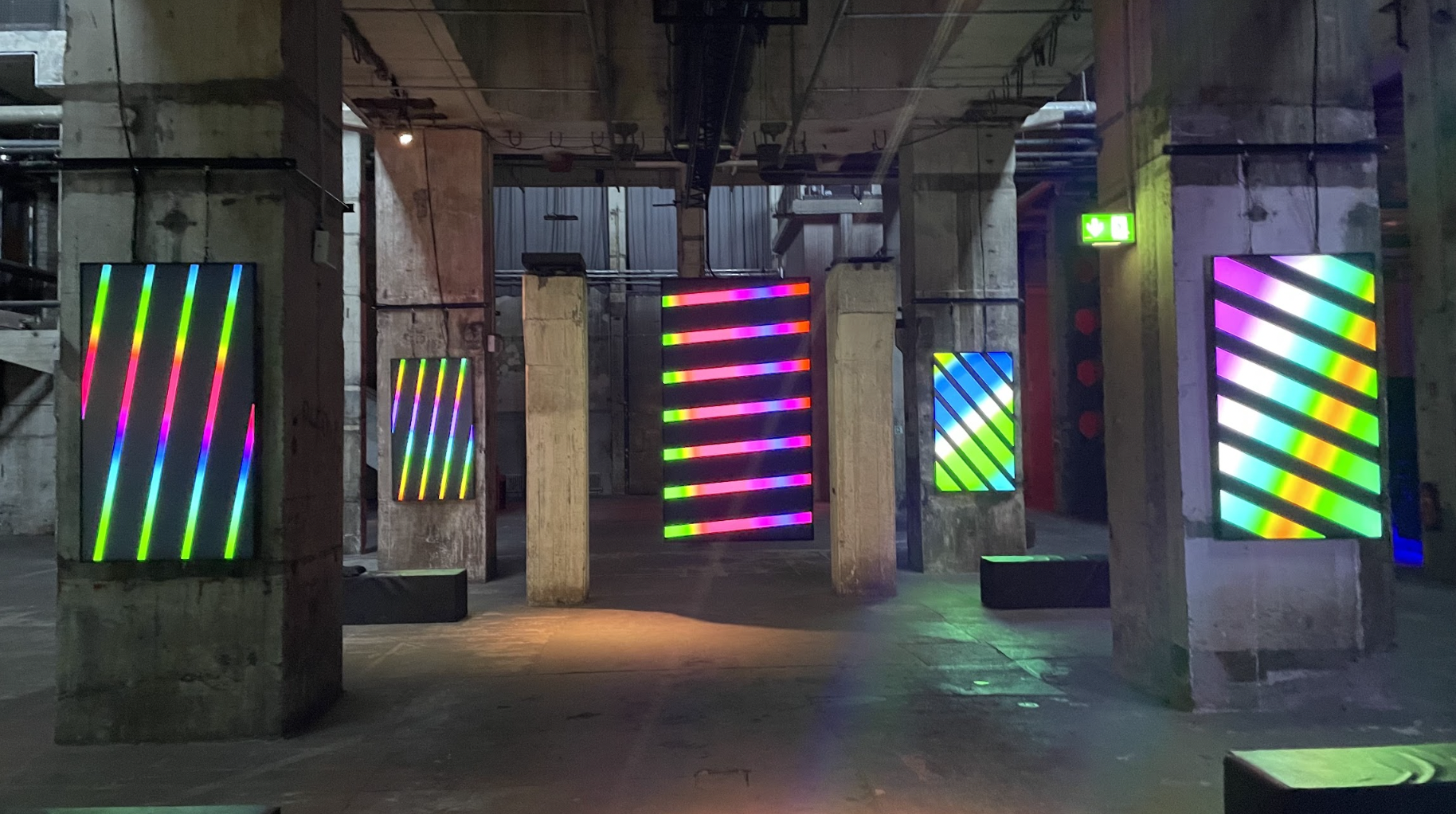LED BY JEFF DAVIS
This was part of an ongoing series of articles that released was digitally in May 2023. They were first published in the print edition of the Bright Moments Quarterly that was distributed at Bright Moments Tokyo in Tokyo, Japan.
Malte Rauch: Thanks for taking the time to do this interview, Jeff! In Mexico, you created “Transcendence,” a very small edition that explores the passage through color from darkness to light. In Tokyo, you are returning to a long-form edition with 100 works. What are you currently working on? And how do you calibrate the edition size of your projects?
Jeff Davis: Throughout all of my projects, I aim to create an algorithm that not only aligns with the themes and concepts I am exploring, but also with the location in which it will be exhibited. In Mexico, the afterlife and spirituality were key themes.
Through the use of color as a symbolic medium, I wanted to express these complex concepts in a visually compelling way. But the algorithm did not necessarily lend itself to a long-form project. That is why we decided to attach it to a rare trait of the CryptoMexas. Ultimately, it was also important to me that the project was gifted and not something to be sold.
Normally I build an algorithm and then decide on the edition size based on the amount of variability it will support. With Bright Moments, it’s the other way around: the edition size is fixed and I am bound to create an algorithm that has the right degree of variety for this size.
That’s fascinating. How does the fact that this project will be minted IRL in Tokyo influence your creative practice?
The thematic starting point for my Tokyo project is technology – specifically display technology. I’ve never been to Tokyo, but I’m really interested in large-scale displays and how they transmit color. I took inspiration from the inner workings of digital displays and how they utilize RGB light technology.
The current title of my project is “LED,” and it explores the range of color possibilities in projected light by breaking each hue down into its individual red, green, and blue components. The project demonstrates how the primary colors of light mix with one another and leans into other interesting optical effects.
Your projects tend to be very minimal and austere, reminiscent of the great modernist experiments in color theory and geometric composition. Do you feel a proximity to the Japanese design aesthetic?
While I have not had the opportunity to travel to Japan and experience its design aesthetic firsthand, I do find myself drawn to certain elements of Japanese architecture and design, particularly the use of the grid and a focus on proportionality.
So from an outside viewpoint, I do feel a certain level of connection to its aesthetic on an abstract and environmental level. I am particularly drawn to the use of linear compositions underpinned by an underlying numeric organization, which creates a sense of sequential space and order that is both visually pleasing and conceptually discernible.
You are closely associated with Bright Moments, having created a project for every city on our roadmap. How has your perception of Bright Moments developed and do you consider your projects for Bright Moments as a sequence?
When I had my first show with Bright Moments during the summer of 2021, I did not have any expectations of what this would become. At the time, it seemed like a one-off event that would be a great experience, but I never imagined it would grow into this journey.
One of the most rewarding things about Bright Moments has been the opportunity to return to a social experience within my art practice – especially after Covid had confined us to our homes for so long. While each of the projects I’ve completed with Bright Moments has its own unique identity, there does seem to be an arc that connects them all, particularly in terms of color exploration and the use of animation which is a new direction in my work. The other important overarching theme of these projects is the connection to the exhibiting city.
Portals was the first project that I worked on for Venice Beach. It was a chance for me to explore the meditative effects of color and animation, and I drew inspiration from the region’s Light and Space artists whose work I have admired for a long time.
Reflections was my project for New York City. Having a solo exhibition in NYC was a dream come true, and I used the project to reflect on my artistic career and the relationships I’ve developed along the way. I used the show as an opportunity to share my new generative art/NFT practice with many of my longtime supporters.
Inflections was my Berlin project, focused on animated color and the visual impact of the project as a whole. The goal of Inflections was to create an architectural installation that would light up Kraftwerk, the massive brutalist power plant where the event took place. The scope of the project felt like an important inflection point in my career, thinking about the expression of my work at scale.
And Formations was my project for London, which was dedicated to craft and printmaking. This was a return to an earlier phase of my career when I primarily produced my work as prints. In addition to looking back at printmaking as a medium, I also tuned the algorithm to revisit an earlier aesthetic in my art, one I was exploring during my undergraduate studies while living abroad in London.
How do you see the concept of IRL minting after having done all of these different projects with Bright Moments?
In the pre-pandemic era, my goal had always been to bring people together in a space and share my work with them in real time. And then two related things – the pandemic and the success of NFTs – completely changed the way I created and presented my art. The desire to connect in real life again is what initially drove me to work with Bright Moments when Seth reached out to me early in 2021.
My interest in sharing my work socially preceded the concept of IRL minting. Portals were actually pre-minted, and we auctioned the pieces while they were on display. In New York, I experienced IRL minting for the first time and was really blown away. I introduced collectors to the artwork in small groups and had the opportunity to speak individually with each of them about their minted piece.
It was really special to establish 100 individual connections for 100 unique works of art. And the artist is just as surprised as the collector during this experience. The fact that the work doesn’t exist before it is minted – I think this is quite unique in the history of art and it forms a new connection between artist, artwork, and collector.
During the last months, generative art has continued to attract a lot of attention among collectors, despite the difficult environment for the crypto market more broadly. At the same time, the erosion of royalties indicates a shift in the working conditions for artists. As an artist and chief creative officer at Art Blocks, how do you evaluate the current environment?
NFTs have definitely been a significant breakthrough for digital artists as they provide a viable means to distribute their creations in a digital form. Although onboarding into crypto can be challenging, NFTs have significantly simplified the stewardship process for digital art, essentially providing a whole new infrastructure.
Moreover, the potential of ongoing royalties and the ability to participate in the long-term value of a project I think is a game-changer for artists. It was one of the reasons that compelled me to work with NFTs as a distribution mechanism. That being said, it is crucial to understand that while technology can facilitate the process, the success of royalties ultimately depends on the culture supporting them. I think this is what we see being played out now.
In Tokyo, Bright Moments will present an AI Collection alongside the generative art collection. We are trying to use Art Blocks Engine Flex to power some of these projects and I know that you have been quite interested in this intersection. What are your thoughts around the rise of AI art and its relationship to the on-chain technology pioneered by Art Blocks?
Art Blocks has a rigorous requirement that all aspects of the work must be on-chain, which has made it difficult to work with AI artists due to the large file sizes of the libraries they normally use. Our new Engine Flex offering opens up distributed file storage for larger assets, which should ostensibly allow AI artists to combine generative minting with larger machine learning models. I’m personally quite excited about this intersection and the idea of combining the Art Blocks minting experience with AI technology. The Tokyo AI collection is an incredible roster of artists, and I’m really excited to see their work alongside the generative Tokyo collection




